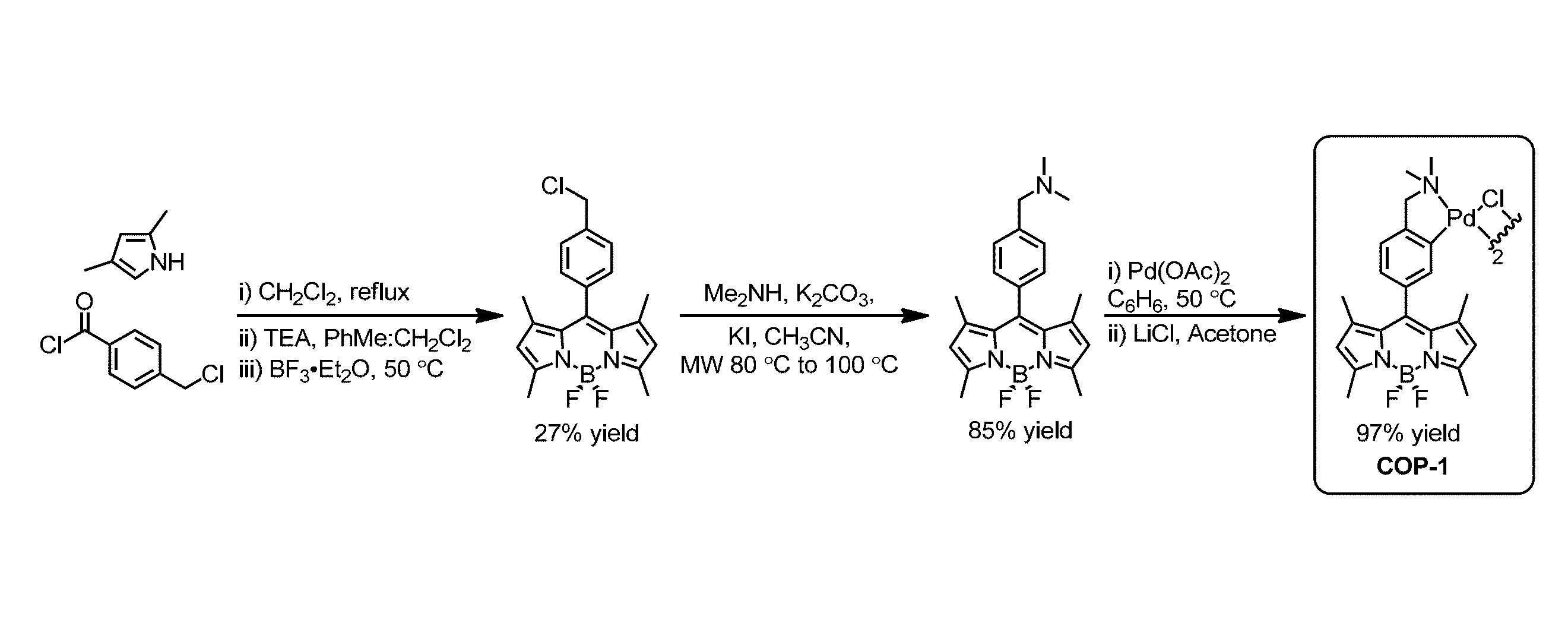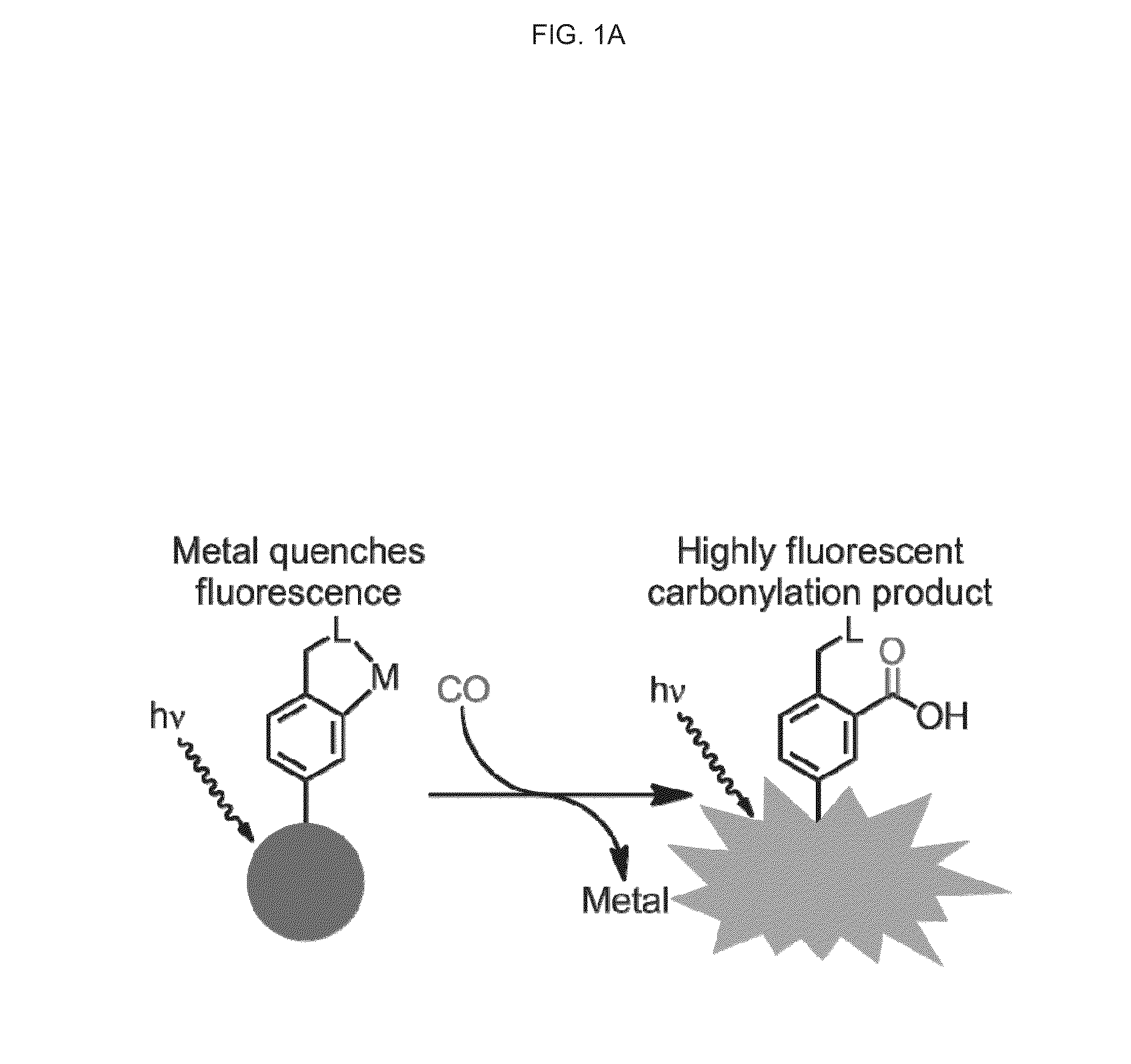Reaction-based fluorescent probe for selective detection of carbon monoxide using metal-mediated carbonylation
a technology of metal-mediated carbonylation and reaction-based fluorescent probes, which is applied in the field of reaction-based fluorescent probes for selective detection of carbon monoxide using metal-mediated carbonylation, can solve the problems of many aspects of its chemistry in biological systems that remain elusiv
- Summary
- Abstract
- Description
- Claims
- Application Information
AI Technical Summary
Benefits of technology
Problems solved by technology
Method used
Image
Examples
example 1
General Methods
[0158]All reactions utilizing air- or moisture-sensitive reagents were performed in dried glassware under an atmosphere of dry N2. When dry solvent was used the solvent was passed over activated alumina. Other reagents were used without further purification. Silica gel P60 (SiliCycle) was used for column chromatography and SiliCycle 60 F254 silica gel (precoated sheets, 0.25 mm thick) was used for analytical thin layer chromatography and visualized by fluorescence quenching under UV light. Ruthenium hexacarbonyldi-μ-chlorodimer was purchased from Strem, 4-(chloromethyl)benzoyl chloride was purchased from TCI America, carbon monoxide gas was purchased from Praxair, and all other reagents were purchased from Sigma-Aldrich. CORM-3 [Ru(CO)3(glycinate)] was prepared according to the literature procedure and spectral properties were in accordance with those reported (Clark, J. E.; Naughton, P.; Shurey, S.; Green, C. J.; Johnson, T. R.; Mann, B. E.; Foresti, R.; Motterlini, ...
PUM
| Property | Measurement | Unit |
|---|---|---|
| time | aaaaa | aaaaa |
| thick | aaaaa | aaaaa |
| chemical shifts | aaaaa | aaaaa |
Abstract
Description
Claims
Application Information
 Login to View More
Login to View More - R&D
- Intellectual Property
- Life Sciences
- Materials
- Tech Scout
- Unparalleled Data Quality
- Higher Quality Content
- 60% Fewer Hallucinations
Browse by: Latest US Patents, China's latest patents, Technical Efficacy Thesaurus, Application Domain, Technology Topic, Popular Technical Reports.
© 2025 PatSnap. All rights reserved.Legal|Privacy policy|Modern Slavery Act Transparency Statement|Sitemap|About US| Contact US: help@patsnap.com



